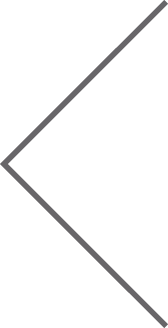Extraordinary! No.1:
The spidersilk necklace of Nicola Scholz
Carina Shoshtary
I find many of Nicola’s pieces very fascinating, but the one that is the most stunning for me is a very simple looking braided cord, which she created entirely from collected spiderwebs. I remember first seeing it a couple of years ago in her diploma show and was really fascinated. The transformation of these transparent threads, which we know to be so fragile and thin, into an even, solid and wearable cord has something magical for me.
I want to use this opportunity to learn more about this piece from Nicola:
Carina: You made a spider silk necklace and another necklace with the legs of a tarantula. What fascinates you about spiders?
Nicola: Spiders are interesting to me because they elicit a strong emotional response in a lot of people. Most of us are frightened or disgusted by them.
The emotional states and feelings of humans have always been a very interesting topic to me. For example, Love, Fear, Sorrow - you cannot control it, you are sometimes not able to explain it, but they are real. They are impossible to suppress, the emotions control our actions and we might not even be aware of it.
The spiders connect you with basic emotions, whether you are wearing the necklaces or just thinking about it. I am not interested in spiders per se, but in the emotional responses they can trigger. The spiders are a means to an end. The spider’s legs touching you in a direct way, the cobweb is a very silent work, but it gets under your skin.
Carina: Do you remember how you got the idea for this piece?
Nicola: In my work the materials are often ambiguous and they trigger different, sometimes opposing emotions. I am always looking for these kinds of material.
The negative associations we have with cobweb are contrasted by its texture. If you see the small ‘wire’ of cobweb, it seems so soft and tender. It really is not very frightening and I wanted to play with these qualities.
Carina: You must have needed an immense amount of cobwebs. Where did you find them and how did you obtain them?
Nicola: First, I visited the University of Bamberg, the Department for “Biomaterialien” (biological materials), they are researching spiderweb for industrial use. There I learned how to milk the spiders in order to acquire the web. But at home I felt so sorry for the spiders and didn't have the heart to do it.
So I had to collect the webs at small mountain huts and farms on the countryside. The cowsheds were a good source!
Carina: I can imagine that making an even cord from this super thin and sticky material was extremely challenging. Which problems did you encounter and how did you solve them?
Nicola: Some of the cobwebs were abound with small flies and I had to clean it. A very time-consuming work and it required a lot of patience.
How to turn it into a string was a very exciting question. I created so many models – but all the models were made with fabric strings, the small spider strings were too precious. Finally, the technique was very simple, but I was really curious about how it works.
Carina: Unlike some of your pieces, which are made from very poisonous or explosive materials, the cobweb necklace could be worn safely. Would you like it to be worn?
Nicola: It is not necessary to wear it, more important are the associations of wearing the piece. The material and the kind of making trigger the emotions.
Carina: Thank you!
2016

